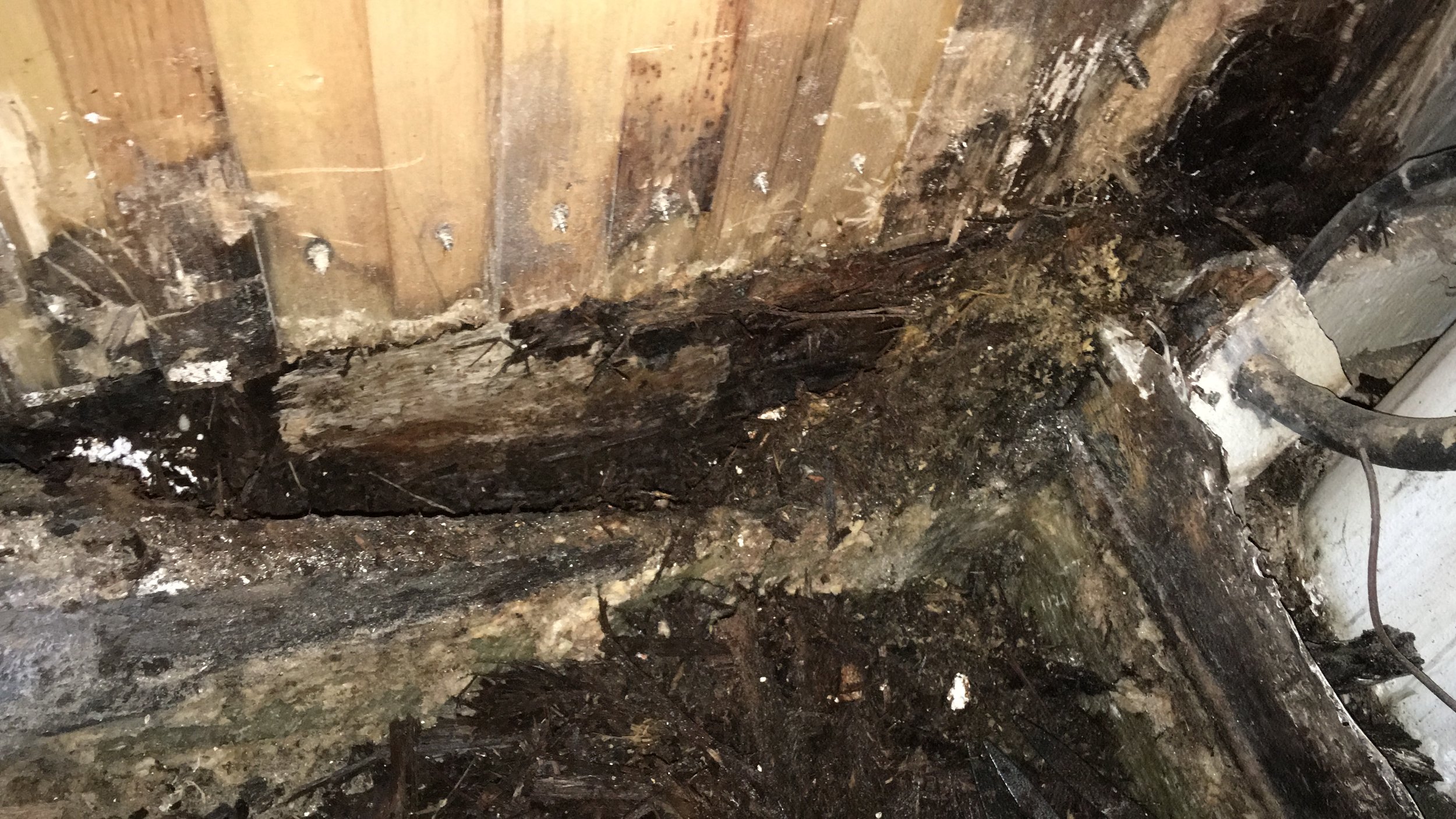The head refit began as an elective procedure. We felt the space in the head was used inefficiently, and so we wanted to make better use of that space. We began by tearing out the cabinets and some small rotten corners were noted on the cabinet itself, but nothing structural.
Then I removed the old shower floor, and this is what I found!
Under the shower was foam, to take up the dead space. The foam was sprayed in between the floors and keel so that water would not collect in there under the shower. The problem with this plan is: water will always find a way!
The foam quickly became a dry sponge that yearned for the moisture above it, and as small bits of water crept past the bedding compound used to hold the shower floor in place, the foam would soak it up and hold it there forever!
Fast forward a few decades and you have waterlogged plywood that has never dried out. It rotted away to mulch! The floors under the shower are completely gone, only the fiberglass tabbing that held them to the hull remains!
Where the bulkhead came down to meet the shower also rotted away completely. The bulkhead is two sheets of 3/4 inch plywood, and the entire bottom section rotted away.
To access the rot, I first sanded away the paint so I could see how far up the wood was discolored. Then I took a small circular saw and cut a 3/4” deep cut to remove the afflicted wood.
With the bulkhead cut back to healthy and unaffected wood, I was then left with the vertical finishing boards of the salon. The entire lower portion of the bulkhead had rotted away because it was abutting the shower floor.
The rotten wood, which had turned into mulch was simply removed by scooping it up and throwing it out. With all the wet and rotten wood out of there, the remaining wood will be left open to dry for the next month.
What looks like mulch is actually the remains of the bottom of the bulkhead. This wood will need to be replaced in a more sound manner that way this issue doesn’t repeat itself in a few more decades.
At the moment, I am debating whether to replace the lost bulkhead material with close cell foam or with new plywood. Either way, the new head will be fully glassed to the walls so that the entire thing is a fiberglass shell that won’t leak water into the timbers of this old boat.





